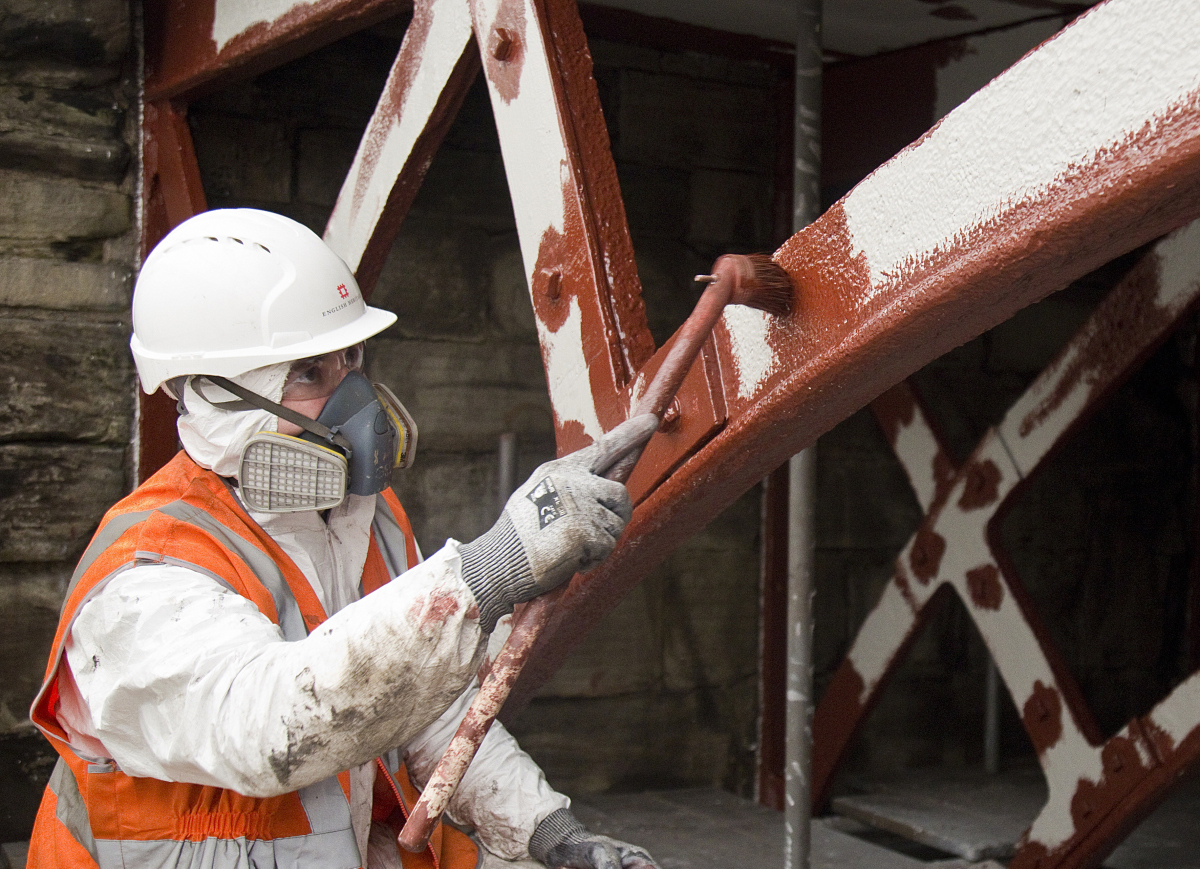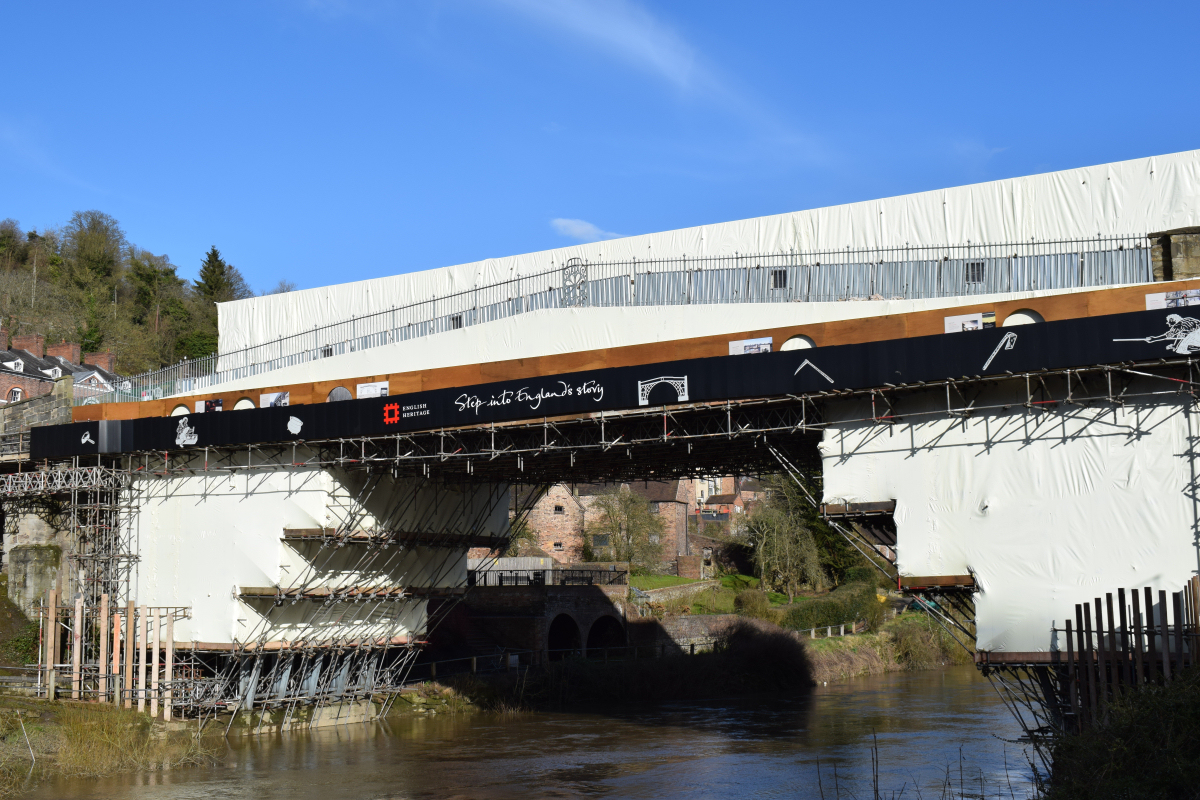The Iron Bridge will be returned to its original colour, English Heritage announced today, following the discovery of samples of the bridge’s earliest paintwork during the charity’s £3.6m conservation of the celebrated masterpiece of British engineering, erected over the River Severn in 1779.

The charity took advantage of the enormous scaffolding currently covering the bridge to undertake detailed research, looking for samples of the earliest historic paintwork. Detailed analysis of those samples revealed that the world’s first iron bridge was originally painted in a very dark red-brown lead-based oil paint – the same colour as depicted in William Williams’ 1780 painting, Cast Iron Bridge near Coalbrookdale, one of the earliest depictions of Abraham Darby III’s pioneering structure. A team of painters has now begun work painting every cast-iron rib, radial and brace in the original colour scheme.

English Heritage’s Senior Property Curator, Dr Heather Sebire, said: “Uncovering the original colour of the Iron Bridge has been a fascinating mix of both archive research work and detailed forensic investigation. We had already found some clues in the archives but the decider was the results of our analysis of the historic paint, revealing a red-brown coating beneath centuries of historic dust and paintwork. That’s when we knew we had found the answer to the key question about the original colour of the Iron Bridge.
“While the bridge is covered in scaffolding, visitors will be able to see it up close and personal via our public walkway, and watch our team of painters transform this revolutionary structure to its original red-brown. And of course, when the scaffolding comes down at the end of the year, we’ll reveal one of the most important bridges in the world, in all its glory.”

Erected in 1779 over the River Severn in Shropshire, the Iron Bridge was the first single span arch bridge in the world to be made of cast iron and was a turning point in British engineering. The bridge’s story began in the early 18th century, in the nearby village of Coalbrookdale when Abraham Darby pioneered the smelting of iron using coke – a process that was a catalyst for the Industrial Revolution. It was Abraham Darby III who cast the ironwork for the bridge that still stands today, using the same techniques developed by his grandfather. After the bridge was built, cast iron came to be widely used in the construction of bridges, aqueducts and buildings. The Iron Bridge was a turning point in British engineering, the great-great grandfather of today’s railways and skyscrapers.
In recent years, extensive surveys and investigations by English Heritage revealed that the historic structure was under threat from cracking due to stresses in the ironwork dating from the original construction, ground movement over the centuries, and an earthquake in the 19th century.
English Heritage’s vital conservation project to save the bridge began in autumn 2017, and conservation of the different elements of the bridge is well under way. Following cleaning, the historic ironwork has already been protected with a layer of primer to prevent further corrosion. Alongside the paintwork, a number of replacement iron wedges have been cast in a historic foundry, are currently being fitted. This represents the largest amount of new metal that will go in to the bridge during the conservation project, which is based on a principle of replacing as little as possible of the original.

At £3.6m, Project Iron Bridge is English Heritage’s single largest conservation project since it became a charity in 2015. Last year, the charity announced a €1m donation from German funder the Hermann Reemtsma Foundation and launched its first ever crowdfunding campaign to coincide with the start of works, with members of the public giving £47,545 to support the project.
See the restoration
A special walkway is in place beside the Iron Bridge, offering visitors a unique perspective on the project, and is open to visitors daily until the end of August, 10am – 4pm. Entry is free, though donations to support the vital conservation project are encouraged.





 Shropshire Live is regulated by
Shropshire Live is regulated by 